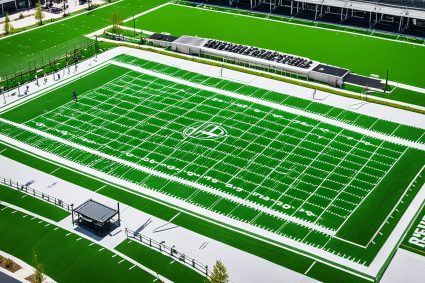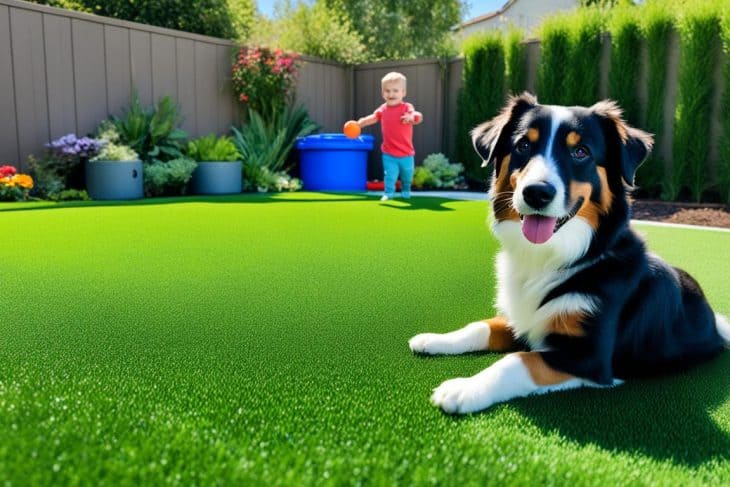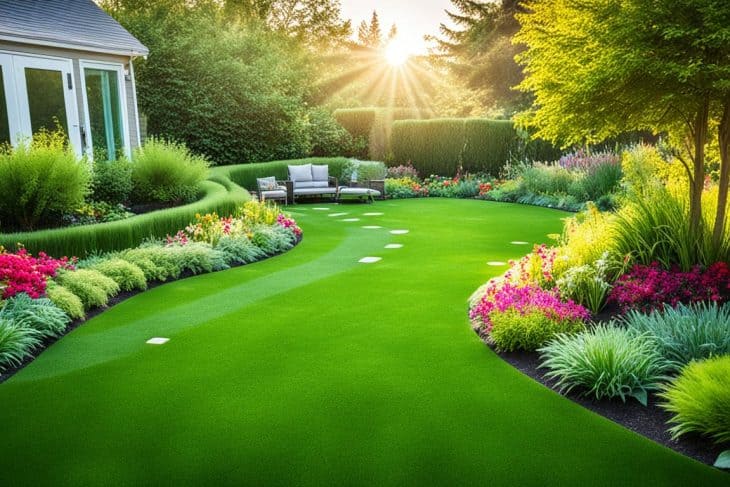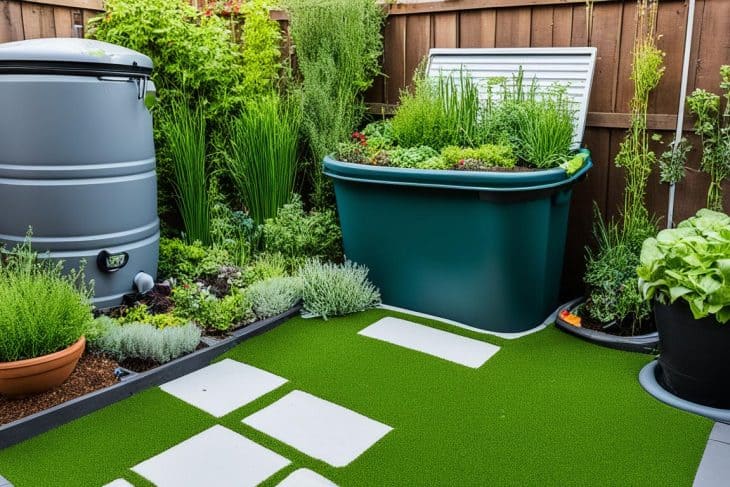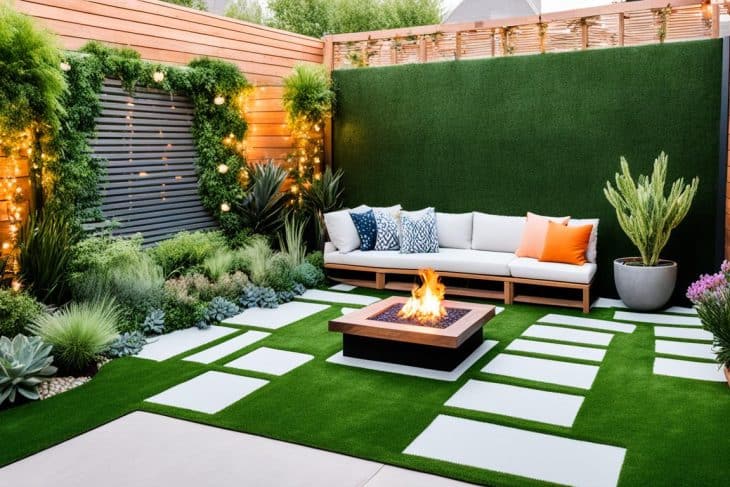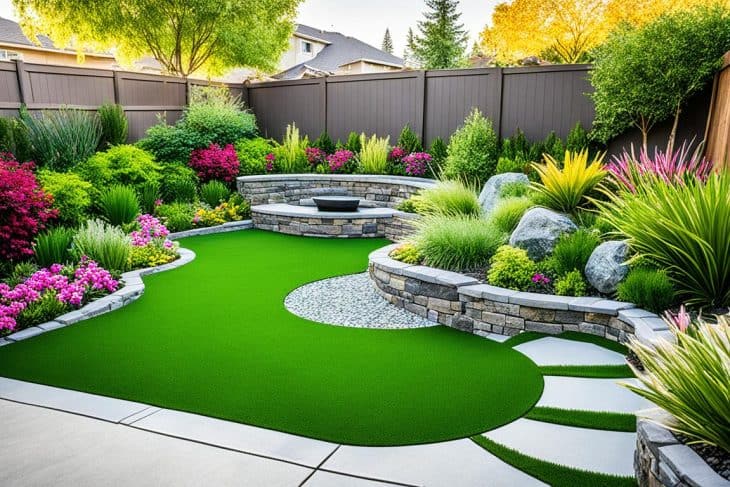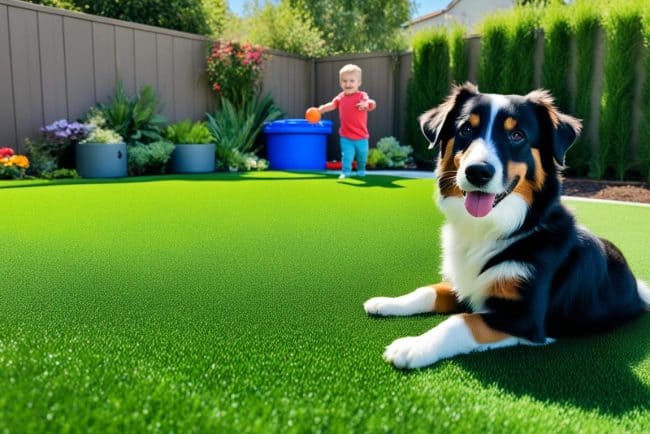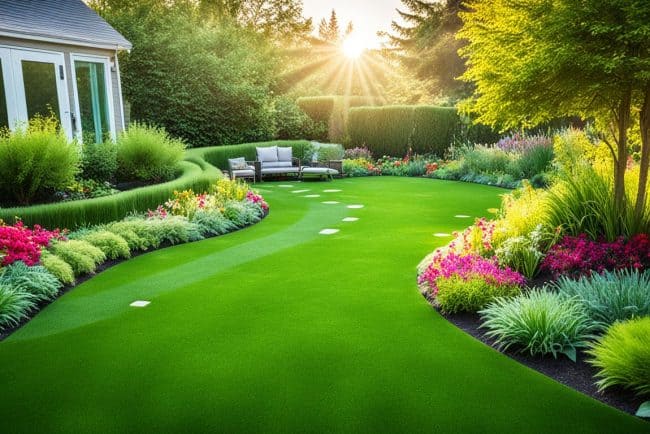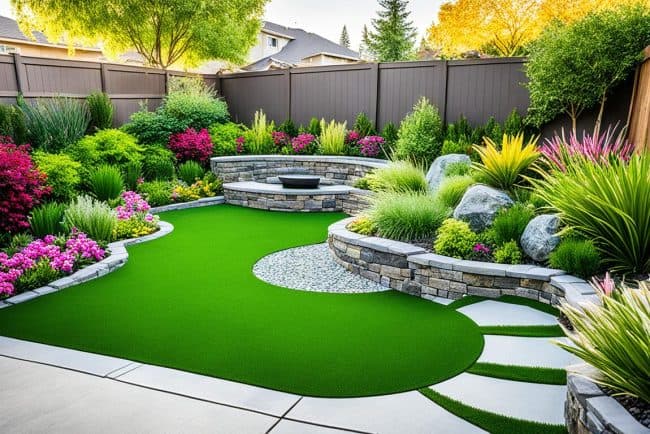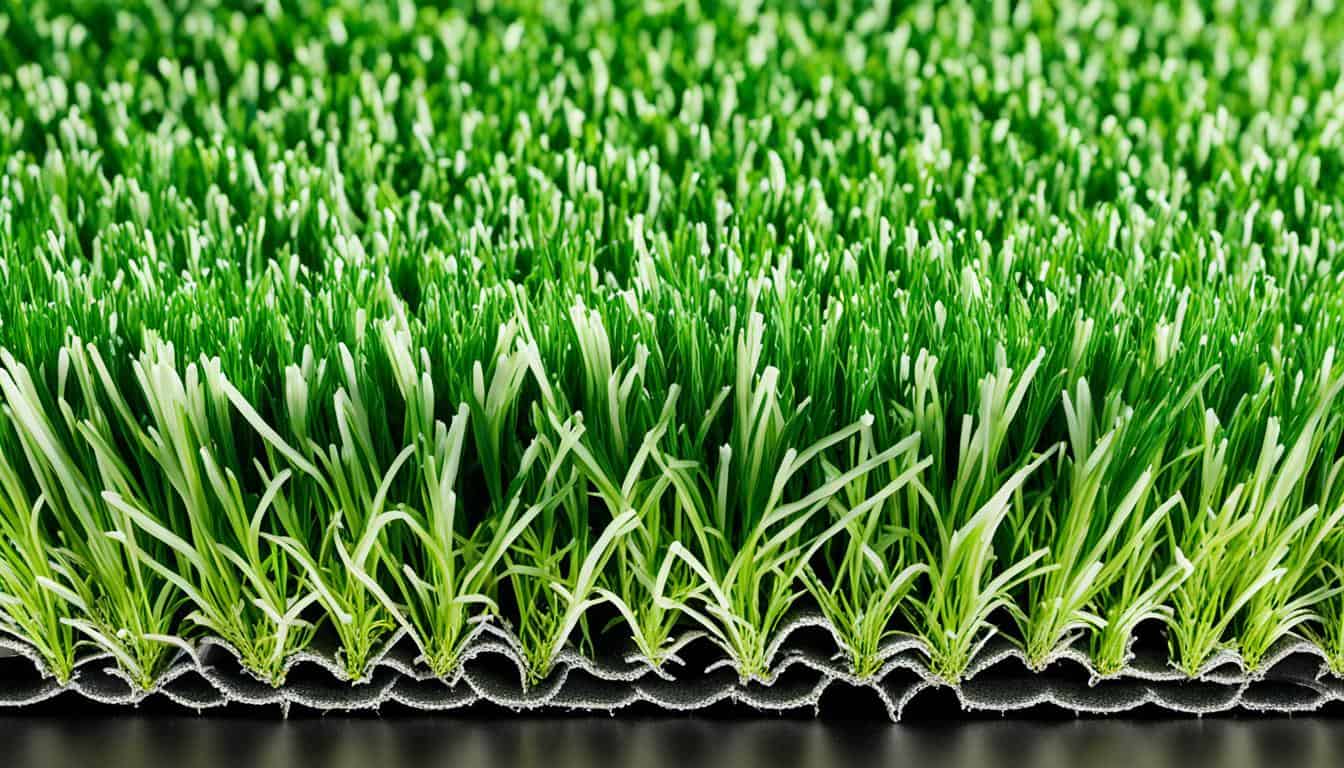
Welcome to the exciting world of artificial grass. We explore top turf choices for homeowners and property managers. They choose artificial turf for its look, low upkeep, and environmental perks.
Artificial grass has come a long way since the 1960s. Now, you have lots of options depending on your needs.
I aim to guide you on finding the perfect turf. Whether it’s for high traffic areas or certain climates, knowing what you need is key. I’ll help you understand your options so you can pick the best artificial grass for your lawn.
What Are Your Artificial Grass Needs?
When picking artificial grass, I look at how I’ll use my outdoor area. It could be for sports, making the place look nice, or for pets. Knowing this helps me choose the right kind of turf.
Checking out my specific outdoor spot is key. A yard, deck, or play area each has its own needs. I think about how much it will be walked on. High-traffic spots need tough turf. Quieter spots can have softer, prettier grass.
Saving money is also important. Good artificial grass costs more at first but saves on upkeep and water. I remember that it might pay off in three to five years. So, I look into things like infill and grass height.
In the end, getting the right artificial grass means mixing use with beauty. It should make my space better while fitting my needs. A wise choice now makes for a great yard in the future.
How to Choose the Best Artificial Grass for Your Space?
Picking the right artificial grass needs careful thought. It’s all about knowing what you want to get out of it. Choosing based on the area’s needs ensures the turf meets your expectations.
Research the Purpose of Your Turf
It’s key to think about how you’ll use the artificial grass. Each use, like for homes, sports, or pets, needs a different kind. For example, a busy play area needs strong turf. This keeps it looking good, no matter how much it gets used.
Consider Foot Traffic and Usage
The amount of foot traffic is important to consider. In places where many people walk, you need tougher grass. Let’s say your backyard often hosts games and parties. Then, you need durable turf to match. This helps you pick turf that lasts and feels right for your space.
Assess Climate and Weather Patterns
The climate in your area matters a lot when choosing turf. You need grass that can handle your weather. For sunny places, grass with UV protection is best. It won’t fade in the sun. Also, turf with good drainage is key for rainy areas. This keeps your yard nice and dry all year.
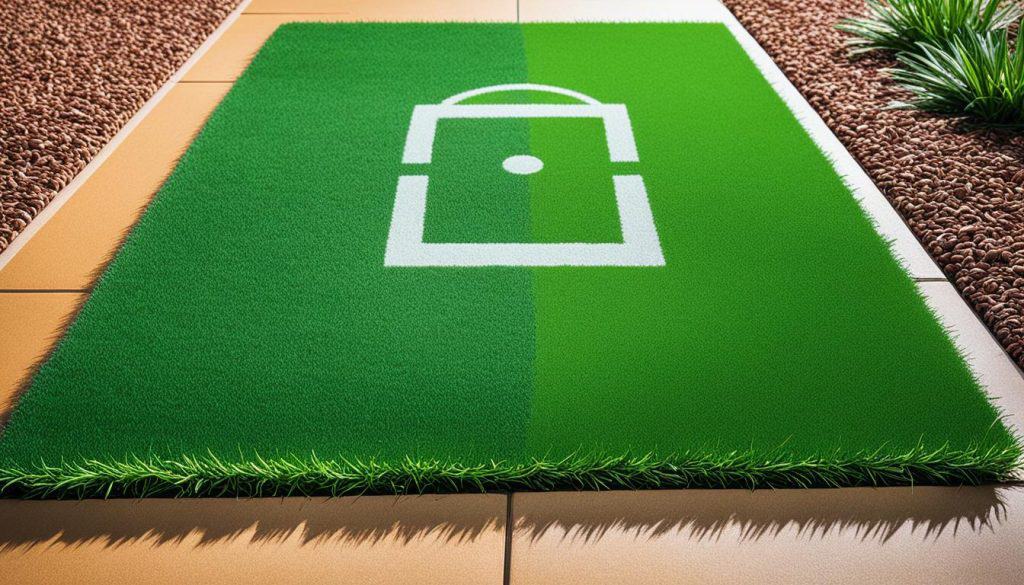
Best Turf Choices for Various Applications
Choosing the right artificial grass can make spaces look and work better. Let’s check out the top turf uses, focusing on look, lasting quality, and special needs. Whether you’re working on yards, places for pets, or golf greens, you’ll find great picks for each need.
The Best Fake Grass for Yards
If you want to make your outdoor area better, synthetic grass for lawns is a great pick. For a lush, green look without much work, try Kentucky bluegrass. It’s strong and loves the cold, perfect for the Northern Zone. Bermudagrass is best for warmer spots. It heals quickly and can handle lots of sun, ideal for the Southern Zone.
The Best Artificial Grass for Dogs and Pets
Choosing artificial grass for pets means looking at how tough and easy to clean it is. Some types are made just for pet owners. They have special drainage and stop smells, so your pets have a clean, safe area to enjoy. Tall fescue is great too. It has deep roots and doesn’t need much water, so it stays strong under active pets.
The Best Artificial Grass for Putting Greens
Golf lovers, take note of the special putting green options out there. Some artificial turfs are just like real grass but made for golfing. They look realistic, letting you practice well. These choices have short blades for good ball movement and drain well, so you can play after it rains.
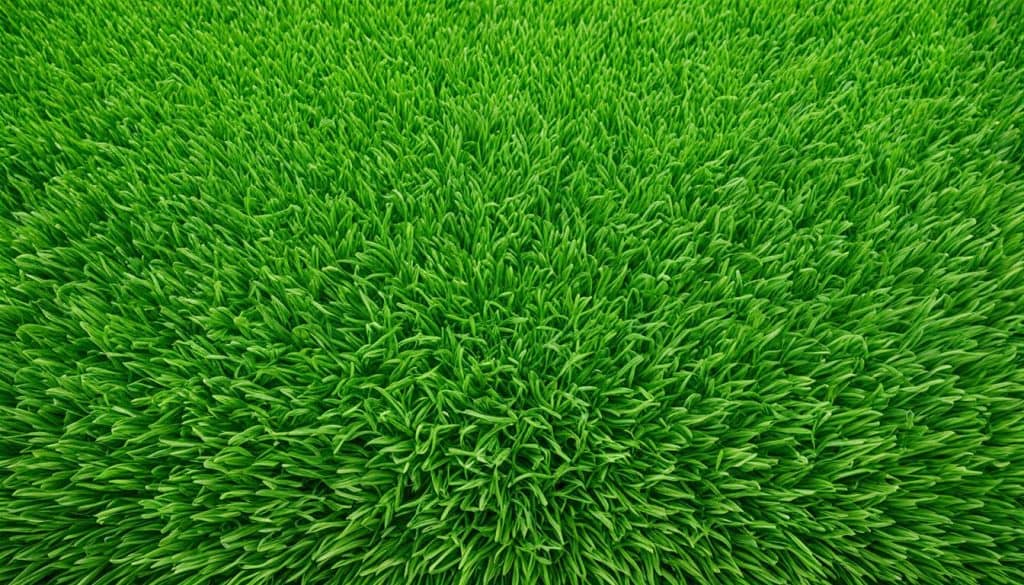
What Characteristics Should the Best Artificial Grass Have?
When choosing artificial grass, it’s important to look at key features for the best result. Things like how real it looks and if it drains well matter a lot. Picking the right one makes sure you’re happy with your choice.
Durability and Resistance to Wear
Durability is crucial for artificial grass. It needs to handle a lot of use and tough weather well. This is especially true for areas like sports fields and places where pets play. Good grass should have a face weight of at least 50 ounces per square yard. Also, a backing weight above 26 ounces means it’s stable.
Realistic Appearance and Feel
Wanting grass that looks and feels real is common. The type of yarn used plays a big role in this. Nylon and polyethylene help it look natural and affect how soft it feels. A high stitch count makes it look fuller. It also makes it feel like real grass when you walk on it.
Effective Drainage System
Good drainage is a must for artificial grass. It’s important to avoid water buildup. Look for a design that lets water run off quickly, especially in wet areas. Grass that drains well looks better and is healthier for outdoor spaces.

Best Turf Choices: A Comprehensive Review
I looked into best turf reviews, focusing on how they perform, last, and look. The market has many options to fit different needs. In this review, I’ll talk about the synthetic grasses that stand out because of their great features.
- Durability: It’s important how long synthetic grass lasts. Grasses with strong backing materials can handle a lot of use.
- Appearance: Grass that looks real is better. Many brands use different greens to look more appealing.
- Installation: Some grasses are easier to install. There’s a big difference in how hard it is to lay them out.
- Maintenance: Grasses that need less care are better for busy people. Those that are easy to keep up save time.
Looking at these points and best turf reviews helps in making a choice. A detailed comparison chart can help pick the right top-rated synthetic grass options from many available.
The Cost of Owning Artificial Grass
Before buying artificial grass, knowing its price is key. Installing it can cost $2 to $20 for each square foot, averaging at $12.5. So, installing it on a 1,000 square foot area may cost about $9,000. These costs change based on location, materials, and if it’s for a home or a business.
In comparison to real grass, artificial grass is different in costs. Sod might start at $3.50 per square foot, reaching $3,500 for the same space. But, real grass needs lots of water—about 24,920 gallons to start. This adds up to $2,340 in water bills over time. Meanwhile, artificial grass might only cost $300 to water over 25 years.
Over time, artificial grass saves money. It uses less water and needs no fertilizers, pesticides, or frequent yard work. In places like Arizona, with high water rates, the savings are big. Homeowners could save around 660,000 gallons of water in 15 years. This not only saves money but might also boost home values by 7%.
The type of turf chosen affects the price. Polyethylene turf might cost $2 to $4 per square foot. Nylon turf could be priced between $5.05 to $5.83. Don’t forget, fill materials can add $0.50 to $2.00 more per square foot. Remembering these costs is important for a lasting and effective setup.
Conclusion and Final Tips
As we close this guide on choosing the right artificial grass, let’s remember the key tips. Knowing the different materials—like budget-friendly polypropylene, durable nylon, and popular polyethylene—is crucial. This knowledge helps you pick the best turf for your needs.
Maintaining artificial grass is important for its looks and long life. Choose turf that can stand different weather, such as Napa Premium for toughness or Catalina for awesome drainage. Whether it’s for parties or a pet-friendly zone like Golden Eagle, every turf has its perks. Think about how you’ll use it and your area’s weather when deciding.
Finally, paying attention to details like pile density, color in various lights, and your space’s needs will lead you to the right artificial grass. Use the advice from this article to help you. Then, make a choice you’ll be happy with for many years.
